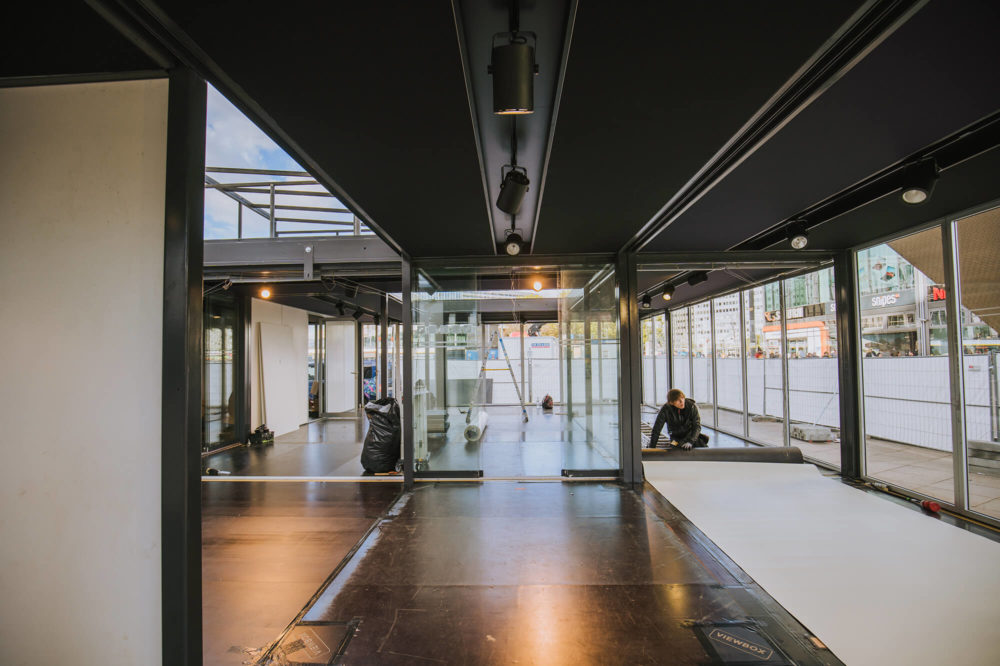Temporary spaces
30th Anniversary of the Peaceful Revolution – Fall of the Wall, 2019
Designing & staging of temporary buildings
Initiator, project lead and realisation
Concept, branding, interior, production management
Alexanderplatz, Brandenburg Gate, East Side Gallery, Gethsemanekirche, Schlossplatz, Kurfürstendamm, Stasi-headquarters
4 Programme Pavilions (160 sqm) with Eventspace, Café, Info & Shop and terrace 3 single Info & Shop Boxes
In 2019, we won Kulturprojekte Berlin’s public tender for the conceptualization and execution of a series of temporary buildings to commemorate the 30th anniversary of the Peaceful Revolution and the Fall of the Berlin Wall. The occasion was marked by a week-long festival. In this context, visitors were invited to enjoy open-air exhibitions, concerts, and video projections referencing Germany’s history at seven symbolic locations around the city of Berlin. To round out the programme, more than 200 events took place in dedicated pavilions, which we designed and implemented. The task was to construct four identical pavilions with rooftop observation platforms combining event space, café, info point and shop, as well as three structures that would serve solely as info points. The main challenge was to balance the complexity, logistics, and timelines of seven parallel construction sites and the weather conditions prevalent in November in Berlin with our aversion to conventional temporary event-structures. In order to deliver exciting spaces in spite of these challenges, we reinvented traditional prefabricated structures by incorporating modular elements from Viewbox. The result was more than just a stack of containers: we created enclosed, rectangular spaces, each totalling 160 m2, that surrounded two inner courtyards. The courtyards were covered withskylights, which let in a great deal of natural light. This created a welcoming, spacious atmosphere – more closely resembling a pavilion than a container – that fit the symbolic nature of the occasion.













